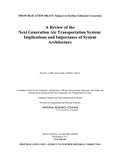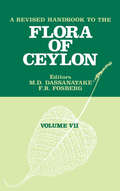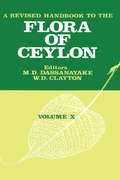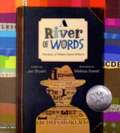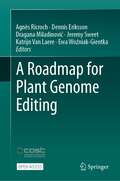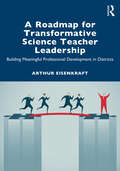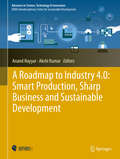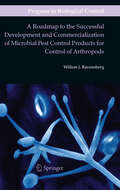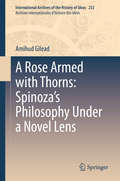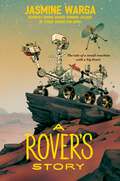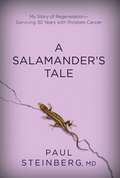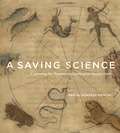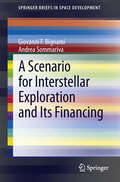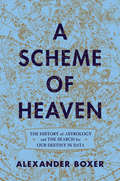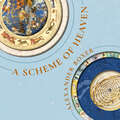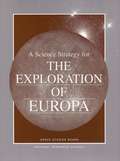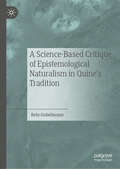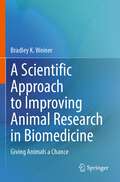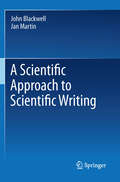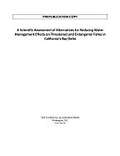- Table View
- List View
A Review of the Next Generation Air Transportation System: Implications and Importance of System Architecture
by David E. LiddleThe Next Generation Air Transportation System's (NextGen) goal is the transformation of the U. S. national airspace system through programs and initiatives that could make it possible to shorten routes, navigate better around weather, save time and fuel, reduce delays, and improve capabilities for monitoring and managing of aircraft. "A Review of the Next Generation Air Transportation" provides an overview of NextGen and examines the technical activities, including human-system design and testing, organizational design, and other safety and human factor aspects of the system, that will be necessary to successfully transition current and planned modernization programs to the future system. This report assesses technical, cost, and schedule risk for the software development that will be necessary to achieve the expected benefits from a highly automated air traffic management system and the implications for ongoing modernization projects. The recommendations of this report will help the Federal Aviation Administration anticipate and respond to the challenges of implementing NextGen.
A Review of the Use of Science and Adaptive Management in California's Draft Bay Delta Conservation Plan
by Technology Board Water ScienceThe San Francisco Bay Delta Estuary is a large, complex estuarine ecosystem in California. It has been substantially altered by dikes, levees, channelization, pumps, human development, introduced species, dams on its tributary streams and contaminants. The Delta supplies water from the state's wetter northern regions to the drier southern regions and also serves as habitat for many species, some of which are threatened and endangered. The restoration of water exacerbated tensions over water allocation in recent years, and have led to various attempts to develop comprehensive plans to provide reliable water supplies and to protect the ecosystem. One of these plans is the Bay Delta Conservation Plan (BDCP). The report, A Review of the Use of Science and Adaptive Management in California's Draft Bay Delta Conservation Plan, determines that the plan is incomplete in a number of important areas and takes this opportunity to identify key scientific and structural gaps that, if addressed, could lead to a more successful and comprehensive final BDCP. The plan is missing the type of structure usually associated with current planning methods in which the goals and objectives are specified, alternative measure for achieving the objectives are introduced and analyzed, and a course of action in identified based on analytical optimization of economic, social, and environmental factors. Yet the panel underscores the importance of a credible and a robust BDCP in addressing the various water management problems that beset the Delta. A stronger, more complete, and more scientifically credible BDCP that effectively integrates and utilizes science could indeed pave the way toward the next generation of solutions to California's chronic water problems.
A Revised Handbook of the Flora of Ceylon - Volume 7
by M.D DassanayakeSeventh volume (in no planned sequence) of the revision of the works of Trimen, Alston, Abeywickrama. A worthy successor to a great and extremely scarce work. We lament that this revision is printed on acidic paper. Annotation copyright Book News, Inc. Portland, Or.
A Revised Handbook to the Flora of Ceylon - Volume 10
by M. D. DassanayakeThis reference work on the flora of Ceylon describes every plant family, including: araliaceae; caricacae; dilleniaceae; fabaceae; loganiaceae; oleaceae; plataginaceae; portulacaceae; rhamnaceae; theaceae; tiliaceae; and violoaceae.
A River of Words: The Story Of William Carlos Williams
by Jen BryantThis book traces the childhood urges to write of William Carlos Williams
A Roadmap for Plant Genome Editing
by Agnès Ricroch Jeremy Sweet Dennis Eriksson Dragana Miladinović Katrijn Van Laere Ewa Woźniak-GientkaThis open access book is an update of genome editing techniques applied to a range of plants. We discuss the latest techniques and applications to cereals, roots and tubers, oilseed crops, fruit and forest trees, vegetables, legumes and algae including resistance to biotic and abiotic stresses, improved quality, drug production, yield and adaptation to climate change. The regulations in different countries worldwide, the patentibility and the perception by society of the applications of new genomic techniques are examined. This book is written by a multidisciplinary and multisectoral collective of high-profile scientists and other experts belonging to the COST Action network PlantEd, which is mainly European but with contributions from American, Australian, Canadian, Chinese, Indian, Iranian, Pakistani and Peruvian scientists. The book is aimed at a wide audience consisting of students, academics, private and public breeders, other actors in the food and bioeconomy value chains and policy and law makers.This is an open access book.
A Roadmap for Transformative Science Teacher Leadership: Building Meaningful Professional Development in Districts
by Arthur EisenkraftThis book is a comprehensive guide to an effective Science Education Fellowship (SEF) program. Spanning more than ten years and involving hundreds of teachers, District Science Coordinators, and university faculty, the Wipro SEF program has empowered teachers to become leaders who drive meaningful, sustainable change in their schools and districts without leaving the classroom.Offering an in-depth look at the SEF program’s structure, from its foundation in teacher leadership development to its innovative adaptations across seven universities and 35 school districts; the book presents a roadmap for implementing similar programs in other school districts, targeting teacher retention, teacher development, and fostering student growth. Readers will find detailed explanations of key program components, and the vital roles of district science coordinators and higher education institutions. Through a mix of theoretical insights, practical strategies, and testimonials from program participants, the book provides a comprehensive model for educators, administrators, and university leaders who aspire to replicate or adapt the SEF program in their own contexts.Ideal for both educators and school administrators, this book will allow you to gain valuable insights into building and sustaining a program that empowers teacher-leaders, drives district-wide transformation, and ultimately improves student outcomes in science education.
A Roadmap to Industry 4.0: Smart Production, Sharp Business and Sustainable Development (Advances in Science, Technology & Innovation)
by Akshi Kumar Anand NayyarBusiness innovation and industrial intelligence are paving the way for a future in which smart factories, intelligent machines, networked processes and Big Data are combined to foster industrial growth. The maturity and growth of instrumentation, monitoring and automation as key technology drivers support Industry 4.0 as a viable, competent and actionable business model. This book offers a primer, helping readers understand this paradigm shift from industry 1.0 to industry 4.0. The focus is on grasping the necessary pre-conditions, development & technological aspects that conceptually describe this transformation, along with the practices, models and real-time experience needed to achieve sustainable smart manufacturing technologies. The primary goal is to address significant questions of what, how and why in this context, such as:What is Industry 4.0?What is the current status of its implementation?What are the pillars of Industry 4.0?How can Industry 4.0 be effectively implemented?How are firms exploiting the Internet of Things (IoT), Big Data and other emerging technologies to improve their production and services?How can the implementation of Industry 4.0 be accelerated?How is Industry 4.0 changing the workplace landscape?Why is this melding of the virtual and physical world needed for smart production engineering environments?Why is smart production a game-changing new form of product design and manufacturing?
A Roadmap to the Successful Development and Commercialization of Microbial Pest Control Products for Control of Arthropods (Progress in Biological Control #10)
by Willem J. RavensbergBiocontrol is among the most promising methods for a safe, environmentally benign and sustainable pest control. Microbial pesticides offer a great potential, and it is anticipated that they will become a substantial part of the use of all crop protection products. Their development and commercialization, however, has been difficult and with many failures. In this book a rational and structured roadmap has been designed for the development and commercialization of microbial pest control products for the control of arthropod pests. The building blocks of the entire process are identified and essential aspects highlighted. Biopesticides based on entomopathogenic bacteria, fungi, viruses and nematodes are elaborately discussed. This systematic roadmap with a strong focus on economics and market introduction will assist academic researchers and industrial developers of biopesticides in accomplishing their goal: the development of successful cost-effective microbial pesticides.
A Rose Armed with Thorns: Spinoza’s Philosophy Under a Novel Lens (International Archives of the History of Ideas Archives internationales d'histoire des idées #232)
by Amihud GileadThis book presents a systemic analysis of Spinoza’s philosophy and challenges the traditional views. It deals with Spinoza’s concepts of substance, truth conditions, attributes, and the first, second, and supreme grades of knowledge. Based upon an analysis of the relevant details in all of Spinoza’s philosophical works, the book reveals many important points, including the following: Spinoza’s system is not, nor is meant to be, a foundational-deductive system but was meant to be a coherent system of a network model. Spinoza’s reality is not made in the image of a mathematical model. Imaginatio, the first grade of knowledge, and ratio, the second grade, are parts or properties of the supreme grade of knowledge, scientia intuitiva, which is their essence. Finite beings, especially humans, are necessary and eternal (unless they are mistakenly perceived by imaginatio) whereas time, place, and death are simply “entities of imagination.” The salvation, happiness, and blessedness that Spinoza’s Ethics offers us, are active and depend only upon us. Concluding a careful examination and interpretation, the book suggests additional novel viewpoints in interpreting Spinoza’s philosophical psychology and political philosophy.
A Rover's Story
by Jasmine WargaNew York Times bestseller * Best Book of the Year from The Washington Post, Publishers Weekly, New York Public Library, Chicago Public LibraryThe One and Only Ivan meets The Wild Robot in this unique and deeply moving middle grade novel about the journey of a fictional Mars rover, from the Newbery Honor–winning author of Other Words for Home. Meet Resilience, a Mars rover determined to live up to his name.Res was built to explore Mars. He was not built to have human emotions. But as he learns new things from the NASA scientists who assemble him, he begins to develop humanlike feelings. Maybe there’s a problem with his programming….Human emotions or not, launch day comes, and Res blasts off to Mars, accompanied by a friendly drone helicopter named Fly. But Res quickly discovers that Mars is a dangerous place filled with dust storms and giant cliffs. As he navigates Mars’s difficult landscape, Res is tested in ways that go beyond space exploration.As millions of people back on Earth follow his progress, will Res have the determination, courage, and resilience to succeed… and survive?
A Salamander's Tale: My Story of Regeneration?Surviving 30 Years with Prostate Cancer
by Paul SteinbergStaring in the face of prostate cancer at age thirty-five and metastatic disease and proposed surgical castration at age forty, Paul Steinberg was forced to take two simultaneous journeys. The first was to transition from doctor to patient and surrender his physical health to a medical establishment he knew from firsthand knowledge would be using approaches that would be outdated within a few years. The second was a spiritual journey. His search for a higher meaning in his life sent him as far as walking over hot coals with Tony Robbins. Using the salamander as his role model, Steinberg, a college-health and sports psychiatrist, takes a look at the evolution of the regenerative capabilities of cold-blooded vertebrates like the salamander and at what we as humans have lost and gained in our warm-bloodedness. How do human beings regenerate? How do we redeem ourselves when our capacity for regeneration is limited? How did the prostate evolve, and how does prostate cancer develop? With wit and humor, Steinberg tackles lust and sex, and ultimately time and death and the gods. Having lived longer than virtually anyone else with metastatic prostate cancer, he uses his knowledge as a doctor and experience as a patient to provide a story of endurance and perseverance, weaving a tale of grace, regeneration, and redemption--just not the kind of regeneration and redemption that he or anyone else would expect.
A Saving Science: Capturing the Heavens in Carolingian Manuscripts
by Eric M. Ramírez-WeaverIn A Saving Science, Eric Ramírez-Weaver explores the significance of early medieval astronomy in the Frankish empire, using as his lens an astronomical masterpiece, the deluxe manuscript of the Handbook of 809, painted in roughly 830 for Bishop Drogo of Metz, one of Charlemagne’s sons. Created in an age in which careful study of the heavens served a liturgical purpose—to reckon Christian feast days and seasons accurately and thus reflect a “heavenly” order—the diagrams of celestial bodies in the Handbook of 809 are extraordinary signifiers of the intersection of Christian art and classical astronomy.Ramírez-Weaver shows how, by studying this lavishly painted and carefully executed manuscript, we gain a unique understanding of early medieval astronomy and its cultural significance. In a time when the Frankish church sought to renew society through education, the Handbook of 809 presented a model in which study aided the spiritual reform of the cleric’s soul, and, by extension, enabled the spiritual care of his community. An exciting new interpretation of Frankish painting, A Saving Science shows that constellations in books such as Drogo’s were not simple copies for posterity’s sake, but functional tools in the service of the rejuvenation of a creative Carolingian culture.
A Saving Science: Capturing the Heavens in Carolingian Manuscripts
by Eric M. Ramírez-WeaverIn A Saving Science, Eric Ramírez-Weaver explores the significance of early medieval astronomy in the Frankish empire, using as his lens an astronomical masterpiece, the deluxe manuscript of the Handbook of 809, painted in roughly 830 for Bishop Drogo of Metz, one of Charlemagne’s sons. Created in an age in which careful study of the heavens served a liturgical purpose—to reckon Christian feast days and seasons accurately and thus reflect a “heavenly” order—the diagrams of celestial bodies in the Handbook of 809 are extraordinary signifiers of the intersection of Christian art and classical astronomy.Ramírez-Weaver shows how, by studying this lavishly painted and carefully executed manuscript, we gain a unique understanding of early medieval astronomy and its cultural significance. In a time when the Frankish church sought to renew society through education, the Handbook of 809 presented a model in which study aided the spiritual reform of the cleric’s soul, and, by extension, enabled the spiritual care of his community. An exciting new interpretation of Frankish painting, A Saving Science shows that constellations in books such as Drogo’s were not simple copies for posterity’s sake, but functional tools in the service of the rejuvenation of a creative Carolingian culture.
A Scenario for Interstellar Exploration and Its Financing (SpringerBriefs in Space Development)
by Giovanni F. Bignami Andrea SommarivaThis book develops a credible scenario for interstellar exploration and colonization. In so doing, it examines: * the present situation and prospects for interstellar exploration technologies; * where to go: the search for habitable planets; * the motivations for space travel and colonization; * the financial mechanisms required to fund such enterprises. The final section of the book analyzes the uncertainties surrounding the presented scenario. The purpose of building a scenario is not only to pinpoint future events but also to highlight the uncertainties that may propel the future in different directions. Interstellar travel and colonization requires a civilization in which human beings see themselves as inhabitants of a single planet and in which global governance of these processes is conducted on a cooperative basis. The key question is, then, whether our present civilization is ready for such an endeavor, reflecting the fact that the critical uncertainties are political and cultural in nature. It is written in such a way as to allow the non-professional reader to become part of the debate on the future of space programs.
A Scheme of Heaven: The History Of Astrology And The Search For Our Destiny In Data
by Alexander BoxerAn illuminating look at the surprising history and science of astrology, civilization’s first system of algorithms, from Babylon to the present day. Humans are pattern-matching creatures, and astrology is the universe’s grandest pattern-matching game. In this refreshing work of history and analysis, data scientist Alexander Boxer examines classical texts on astrology to expose its underlying scientific and mathematical framework. Astrology, he argues, was the ancient world’s most ambitious applied mathematics problem, a monumental data-analysis enterprise sustained by some of history’s most brilliant minds, from Ptolemy to al-Kindi to Kepler. Thousands of years ago, astrologers became the first to stumble upon the powerful storytelling possibilities inherent in numerical data. To correlate the configurations of the cosmos with our day-to-day lives, astrologers relied upon a “scheme of heaven,” or horoscope, showing the precise configuration of the planets at a particular instant in time as viewed from a particular place on Earth. Although recognized as pseudoscience today, horoscopes were once considered a cutting-edge scientific tool. Boxer teaches us how to read these esoteric charts—and appreciate the complex astronomical calculations needed to generate them—by diagramming how the heavens appeared at important moments in astrology’s history, from the assassination of Julius Caesar as viewed from Rome to the Apollo 11 lunar landing as seen from the surface of the Moon. He then puts these horoscopes to the test using modern data sets and statistical science, arguing that today’s data scientists do work similar to astrologers of yore. By looking back at the algorithms of ancient astrology, he suggests, we can better recognize the patterns that are timeless characteristics of our own pattern-matching tendencies. At once critical, rigorous, and far ranging, A Scheme of Heaven recontextualizes astrology as a vast, technological project—spanning continents and centuries—that foreshadowed our data-driven world today.
A Scheme of Heaven: The History and Science of Astrology, from Ptolemy to the Victorians and Beyond
by Alexander BoxerHumans are pattern-matching creatures, and astrology is our grandest pattern-matching game. In this ingenious work of history, data scientist Alexander Boxer examines a treasure trove of esoteric classical sources to expose the deep imaginative framework by which - for millennia - we made sense of our fates. Astrology, he argues, was the ancient world's most ambitious applied mathematics problem, a grand data-analysisenterprise sustained by some of history's most brilliant minds, from Ptolemy to al-Kindi to Kepler.Despite a resurgence in popularity, horoscopes are generally considered to be pseudoscience today, but they were once a cutting-edge scientific tool. Boxer explores their extraordinary subtleties and tells the stories of their inventors and most influential exponents. And he puts them through their paces using modern data sets - finding that the methods of today's scientists are often uncomfortably close to those of astrology's ancient sages.
A Science Strategy for the Exploration of Europa
by National Research CouncilA Science Strategy for the Exploration of Europa
A Science-Based Critique of Epistemological Naturalism in Quine’s Tradition
by Reto GubelmannAt the intersection of epistemology, metaphilosophy, and philosophy of science, this exciting new book examines the epistemic limits of empirical science. It makes a unique contribution to research on epistemological naturalism in Quine’s tradition by criticizing the position based on first-order data from empirical psychology and the history of natural science. This way, it meets the naturalist on their own ground not only regarding subject matter, but also regarding their epistemic methods. The book explores the works of a variety of philosophers in the field, including W. V. Quine, Penelope Maddy, Tyler Burge, Stathis Psillos and Howard Sankey. By carefully considering experimental results from behaviourism as well as developmental and perceptual psychology, Gubelmann finds that none of these disciplines can furnish the epistemic means to successfully naturalize the central cognitive preconditions of scientific theorizing. Furthermore, Gubelmann presents novel arguments for the claims that epistemological naturalists are committed to scientific realism, and that they are unable to defend this position. Based on these results, Gubelmann concludes that epistemology is not part of empirical science, which directly contradicts epistemological naturalism.
A Scientific Approach to Improving Animal Research in Biomedicine: Giving Animals a Chance
by Bradley K. WeinerThis book examines animal research conducted with the goal of medical translation to humans. It is written by Dr. Bradley Weiner, a surgeon who is active at a high level clinically and in biomedical research. After documenting that the vast majority of biomedical animal research fails to result in benefits to humans via translation, the book examines the sources of such failure; including the failure to justify the use of animals, the failure to properly apply scientific methods, the failure to perform the research properly in the lab, the failure to consider the possibility of translation a priori, and systematic sources of failure built into the biomedical research enterprise. The book then explores options to improve the situation, for the benefit of both the animals and humans.
A Scientific Approach to Scientific Writing
by John Blackwell Jan MartinThis guide provides a framework, starting from simple statements, for writing papers for submission to peer-reviewed journals. It also describes how to address referees' comments, approaches for composing other types of scientific communications, and key linguistic aspects of scientific writing.
A Scientific Assessment of Alternatives for Reducing Water Management Effects on Threatened and Endangered Fishes in California's Bay-Delta
by National Research Council of the National AcademiesCalifornia's Bay-Delta estuary is a biologically diverse estuarine ecosystem that plays a central role in the distribution of California's water from the state's wetter northern regions to its southern, arid, and populous cities and agricultural areas. Recently, the Fish and Wildlife Service and the National Marine Fisheries Service required changes (reasonable and prudent alternatives, or RPAs) in water operations and related actions to avoid jeopardizing the continued existence and potential for recovery of threatened species of fish. Those changes have reduced the amount of water available for other uses, and the tensions that resulted have been exacerbated by recent dry years. The complexity of the problem of the decline of the listed species and the difficulty of identifying viable solutions have led to disagreements, including concerns that some of the actions in the RPAs might be ineffective and might cause harm and economic disruptions to water users, and that some of the actions specified in the RPAs to help one or more of the listed species might harm others. In addition, some have suggested that the agencies might be able to meet their legal obligation to protect species with less economic disruptions to other water users. The National Research Council examines the issue in the present volume to conclude that most of the actions proposed by two federal agencies to protect endangered and threatened fish species through water diversions in the California Bay-Delta are "scientifically justified." But less well-supported by scientific analyses is the basis for the specific environmental triggers that would indicate when to reduce the water diversions required by the actions.
A Scientific Assessment of the Validity of Mystical Experiences: Understanding Altered Psychological and Neurophysiological States (Routledge Research in Psychology)
by Andrew C. PapanicolaouIn this book the approach of the natural sciences is adopted to confront the ontological question of how far mystical experiences can be considered as reports of an objective reality rather than reports of subjective delusions. Moving beyond traditional philosophical or cultural and theological interpretations of mystical phenomena, the author uses inductive inference to analyze claims made by secular and religious mystics, highlight links between altered states of consciousness and neurochemistry, and counters reductionist claims that mystical states are exclusively products of neurochemical, neurophysiological, or psychopathological factors. The text also considers the positive long-term effects of proper use of psychedelics and meditation. This fresh approach to mystical experiences will be of interest to scholars, researchers, and postgraduate students working in the areas of psychology and neuroscience, and with an interest in mysticism in religious studies and philosophy.
A Scientific Revolution: Ten Men and Women Who Reinvented American Medicine
by Dr. Ralph H. Hruban William LinderA prismatic examination of the evolution of medicine, from a trade to a science, through the exemplary lives of ten men and women. Johns Hopkins University, one of the preeminent medical schools in the nation today, has played a unique role in the history of medicine. When it first opened its doors in 1893, medicine was a rough-and-ready trade. It would soon evolve into a rigorous science. It was nothing short of a revolution. This transition might seem inevitable from our vantage point today. In recent years, medical science has mapped the human genome, deployed robotic tools to perform delicate surgeries, and developed effective vaccines against a host of deadly pathogens. But this transformation could not have happened without the game-changing vision, talent, and dedication of a small cadre of individuals who were willing to commit body and soul to the advancement of medical science, education, and treatment. A Scientific Revolution recounts the stories of John Shaw Billings, Max Brödel, Mary Elizabeth Garrett, William Halsted, Jesse Lazear, Dorothy Reed Mendenhall, William Osler, Helen Taussig, Vivien Thomas, and William Welch. This chorus of lives tells a compelling tale not just of their individual struggles, but how personal and societal issues went hand-in-hand with the advancement of medicine.
A Scientist Like Me
by Dr Shini SomaraElectrifying illustrations and an empowering story combine to introduce young readers to the world of science, observation and problem-solving.There's NOTHING that Ruben doesn't find fascinating. Why do leaves change colour? What makes ice cream melt? On a trip to the beach with his mum, he discovers how the world works and the brilliant scientists who have helped us understand it. Maybe he can try out some awesome experiments and become a scientist too?With pages encouraging kids to try out their very own science experiments such as germinating seeds and writing with invisible ink, this brilliant picture book written by scientist and TV presenter Dr Shini Somara unlocks a love of science and celebrates women in STEM.The second book in an exciting new series. Also available:- An Engineer Like Me- A Coder Like Me- A Mathematician Like Me
